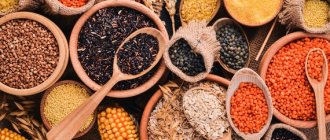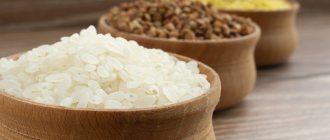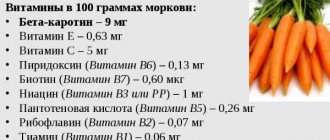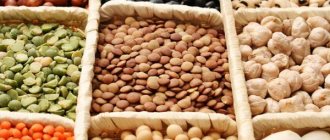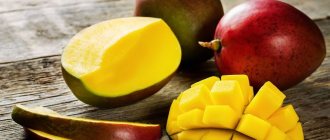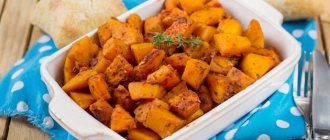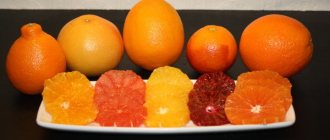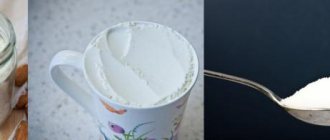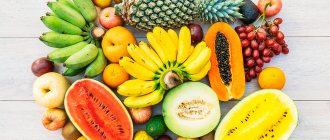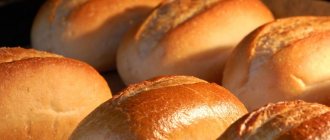Factors influencing the glycemic index of foods
First of all, the body's reaction to carbohydrates is determined by age, the amount of physical activity and the speed of digestion of food.
But besides this, many other factors have an influence, such as the maturity of the products, the way they are prepared, whether they are processed, the type of sugar they contain, etc.
- Type of sugar in products.
There is a misconception that all sugars have a high GI. In fact, it varies from 23 for fructose to 105 for maltose (malt). Consequently, the GI of a product largely depends on the type of sugar that is included in its composition. - Food processing. Frying and baking tend to increase the GI and can destroy resistant starch, a type of starch that is resistant to digestion and has been linked to the prevention and control of chronic diseases. This type of starch is found, for example, in beans, raw potatoes, beans and seeds. Moreover, boiling, according to research, helps preserve more resistant starch and leads to a decrease in GI.
- Product maturity level.
The amount of resistant starch decreases during ripening, which leads to an increase in GI. For example, fully ripe bananas have a glycemic index of 51, while green ones barely exceed 30. - Degree of preparation.
The longer you cook pasta or rice, for example, the more the GI increases. Thus, the ideal degree of cooking is al dente.
Buckwheat
Cereals are quite popular among those who decide to eat healthy. There are even a number of specially designed diets based on porridge in combination with vegetables and lean meats.
An interesting point is that the GIs of raw and cooked cereals are in different categories:
- raw buckwheat – 55,
- boiled cereal – 40.
The composition and content of nutrients does not change, but the index values vary due to the presence of water in the boiled dish.
Water during the cooking process reduces the GI values of any cereal. This condition only applies if there are no other additives, not even oil.
The product belongs to the middle group. Adding milk or sugar already shows completely different results, transferring the cereal to the category of cereals with a high glycemic index. A quarter of 100 g of buckwheat consists of carbohydrates, which means you should refrain from eating it for dinner and combining it with other carbohydrate foods. It is better to combine with vegetables and add proteins in the form of fish and chicken.
Difference between glycemic index and glycemic load
In addition to GI, there is also the concept of glycemic load (GL), which displays the amount of carbohydrates per 100g of product. The higher the indicator, the more carbohydrates enter the body.
Thus, the glycemic index gives information about the rate of sugar entering the blood, and the glycemic load gives information about its amount.
What indicators are considered high and low glycemic load?
- Low glycemic load – from 0 to 10
- Average glycemic load – from 11 to 19
- High glycemic load – 20 or more
The indicator can be calculated using the following formula:
(Glycemic index of food × amount of carbohydrates per serving in grams) ÷ 100
Formula for calculating glycemic load
For example, the GI of one fresh peach is 35, and the amount of carbohydrates it contains is 10 g.
Thus, GN = (35 x 10) /100 = 3.5
Some foods, especially fruits and vegetables, have a high GI but actually have little effect on blood glucose levels due to the small amount of carbohydrates they contain.
A striking example is carrots. Despite the fact that its GI is 71, the glycemic load is only 5. Therefore, only drinking a liter of freshly squeezed juice in one gulp can significantly affect blood sugar levels.
Or take watermelon, it has a high GI - 72-80, but contains a small amount of carbohydrates (less than 8 grams per 100 grams of product). The average serving of watermelon has a low glycemic load (within 6-7), so you can eat it without fear for your health.
Can knowing the glycemic load of foods help you lose weight?
When you consume foods with a high GI and GL, your blood sugar levels spike, causing a brief feeling of fullness, but then your blood sugar levels plummet and force you to look for food again to fuel your body. This ultimately leads to excess calorie intake, which contributes to weight gain.
Foods with low GI and GN saturate the body longer because they break down more slowly.
Normal daily glycemic load:
- For regular food – no more than 100
- For weight loss – no more than 80
- Diabetic nutrition – 60-70
Additional features
Barley and cereals prepared on its basis are actively used in the field of traditional medicine. This is explained, for example, by the fact that a decoction based on them is characterized not only by a softening or enveloping effect, but also by antispasmodic and anti-inflammatory effects. We should not forget about the general strengthening properties, which will be useful for anyone who has been diagnosed with type 1 or type 2 diabetes.
Barley is also used in the treatment of this disease because it makes it possible to combat impaired vision, kidney, liver or gall bladder diseases. The presented product will be no less useful if it is necessary to restore the optimal condition of the urinary tract and for ailments of the entire gastrointestinal tract system.
A decoction prepared from barley is characterized by various positive effects on the general condition of the body. In addition, it is with the help of barley that it is possible to treat pathological conditions associated with the mammary gland, as well as get rid of constipation or obesity. If the body is in normal condition, treatment of coughs and colds is possible.
DIABETES IS NOT A VERDICT! Myasnikov told the whole truth about diabetes! Diabetes will go away forever in 10 days if you drink in the morning... »read more >>>
I would also like to draw attention to the fact that the presented diabetic product can also be used as a general tonic. This is carried out in the period after surgery for inflammatory diseases of the stomach or intestines
Thus, eating barley in the form of porridge and other food products is more than acceptable. However, it is strongly recommended to first consult with a specialist and familiarize yourself with the list of main contraindications and restrictions.
ul
When and who should eat low GI foods?
There are special diets based on the glycemic index. They consist primarily of proteins (meat, fish, seafood), non-starchy vegetables (green peas, broccoli, eggplant, Brussels sprouts, etc.), whole grains and cereals.
Nutritionists recommend this form of food restrictions in the following cases:
- for diabetes or for its prevention;
- in cases where a person has problems with the absorption of insulin;
- for slow but long-term weight loss;
- in case of metabolic failures, since the diet helps to improve metabolism.
In the case of people with diabetes, another indicator is also taken into account - the insulin index (II). It provides information about the amount of insulin produced in the body in response to eating a particular food. Unlike GI, which takes into account exclusively carbohydrates, AI takes into account protein and fat-containing foods, as well as their combination.
The glycemic and insulin indexes of foods differ. For example, the GI of yogurt is 60, and its AI is 115. That is why it is recommended to take it into account in case of insulin resistance.
Glycemic index diet helps you lose weight safely
Table
| Groats | Glycemic index |
| White rice | 65 |
| Brown rice | 55 |
| Parboiled rice | 38 |
| Whole grain oatmeal | 58 |
| Buckwheat | 50 |
| Millet | 45-50 |
| Barley | 30-35 |
| Rye flakes | 55 |
| Bulgur | 48 |
| Quinoa | 40-45 |
| Corn grits | 70 |
| Semolina | 60 |
| Spelled | 55 |
Pros and cons of following a low glycemic index diet
The positive aspects include the following:
- A low GI diet encourages the consumption of foods that are less processed and contain more fiber and nutrients, which has positive effects on the body.
- Many studies have shown that following a low-GI diet helps lower blood sugar and improve blood sugar control in people with type 2 diabetes, and prevent and delay complications including heart disease, stroke and kidney damage.
- Eating a low GI diet helps lower cholesterol, which is a risk factor for heart disease.
- If you exercise, knowing what foods to eat before, during, and after your workouts helps you consume enough energy to perform and recover. This will help you lose weight more effectively in your waist, abdomen, legs, arms and tone your body faster.
- Eating foods with a low glycemic index helps control the hunger hormone ghrelin. It reduces appetite and helps you feel fuller longer, thereby reducing the number of unhealthy snacks.
Disadvantages of the glycemic index diet
- The glycemic index does not give the full picture of nutrition. It is also important to consider the fat, protein and fiber content of food, regardless of its GI. Let's take M&M's as an example. Chocolate jelly beans have a lower glycemic index than oatmeal or green peas. But it is obvious that the latter contain much more nutrients, so you should choose wisely.
- The GI measures the effect of specific foods on blood sugar, but does not take into account the combination of foods. Many questions arise when it comes to calculating, for example, a salad or a portion of rice with vegetables that are combined from many different ingredients.
- The glycemic index can vary greatly depending on a number of factors, which were described above. GI tables are generally averages and can really only be considered indicative and not definitive.
How is glucose absorbed?
The breakdown of complex sugars to glucose (pictured) occurs due to the food enzyme amylase.
Most foods, along with proteins and fats, contain carbohydrates, which are of two types:
- Simple carbohydrates or regular sugar are a water-soluble compound of glucose and fructose.
- Complex polysaccharides or starches are quite insidious and “not always sweet” substances.
The absorption of simple carbohydrates does not require additional enzyme participation. They quickly and independently break down into their components, but in order for starches to enter the bloodstream through the intestinal walls, they must be converted into glucose.
Rice
The performance of rice depends on its variety. White rice, a grain that has undergone the process of cleaning and polishing, has a score of 65, which puts it in the middle group of products. The brown variety of rice (not peeled, not polished) is characterized by an indicator of 20 units less, which makes it safer for diabetics.
Rice is a world-famous cereal that saturates the body with essential substances.
Rice is a storehouse of vitamins B, E, macro- and microelements, as well as essential amino acids. Patients need all this to prevent complications of diabetes (polyneuropathy, retinopathy, kidney pathology).
The brown variety is more beneficial both in terms of the amount of substances needed by the body and in terms of individual GI and calorie indicators. The only negative is its short shelf life.
Milk reduces the GI values of rice compared to water (70 and 80, respectively).
Is it possible to eat broccoli raw: tips
You can eat broccoli raw
You can eat broccoli raw. Here are some tips on how to do it correctly:
- It is necessary to wash the head of cabbage from dirt, preferably under running water.
- Afterwards, soak in a saucepan with salted water for 15 minutes - no more is needed. This way, you will get rid of insects that may have gotten between the cabbage inflorescences.
- Now you can prepare salads and whip up smoothies.
Uncooked broccoli contains many more vitamins. In their raw form, nutrients with anti-cancer effects, such as sulforaphane, are better absorbed. Raw inflorescences are used for salads, snacks and smoothies; cabbage has a sweetish taste. Broccoli is a very popular vegetable among raw foodists. In this form it goes well with meat and sour cream.
Corn porridge
This type of cereal is also a storehouse of vitamins, amino acids and minerals, but it must be handled with extreme caution, since the GI of the product can reach up to 70. It is advisable not to use milk and sugar when preparing corn porridge. It is enough to boil the cereal in water and add a small amount of fructose, stevia or maple syrup as a sweetener.
Corn grits are famous for their high content of the following substances:
- magnesium – in combination with B-series vitamins, improves cell sensitivity to insulin, has a beneficial effect on the functioning of the heart and blood vessels;
- iron – prevents the development of anemia, improves the process of saturating cells with oxygen;
- zinc – promotes normal functioning of the pancreas, strengthens immune processes;
- B vitamins – restore the functioning of the nervous system, their use is a preventive measure in the development of diabetes complications;
- beta-carotene – normalizes the functioning of the visual analyzer, prevents the appearance of retinopathy.
Corn grits should be used exclusively in boiled form. Corn flakes, popcorn or sticks have much higher GI values.
Boiled corn for weight loss
Corn has long been a popular product among those who want to lose weight. Thanks to the rich content of amino acids and vitamins, the corn mono-diet saturates the body with valuable nutrients without causing exhaustion. Corn effectively cleanses the intestines, removes waste and toxins, which is very important for starting metabolism, cleansing the body and the weight loss process itself.
The coarse plant fiber in corn kernels works in the intestines like a broom, clearing out stagnant feces. Therefore, boiled corn has a laxative effect. Often, chronic constipation also prevents you from losing excess weight.
When losing weight, be sure to eat corn without salt. Important rule! Being a high carbohydrate food, corn takes a long time to digest. Therefore, in order to lose weight, you need to eat corn exclusively in the first half of the day. Thanks to the starch in the cob, you will not feel hungry for at least 4 hours.

